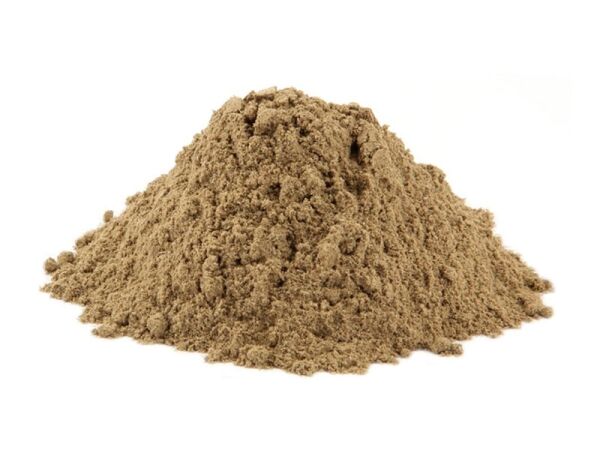Table of Contents
What is Organic Echinacea Purpurea Extract Powder?
Organic Echinacea Purpurea Extract Powder is derived from the root, flowers, and leaves of the Echinacea purpurea plant, which is widely recognized for its immune-boosting properties. Known for its natural ability to enhance the body’s defense mechanisms, this extract powder is a highly concentrated form of Echinacea’s active compounds, making it ideal for use in dietary supplements, herbal formulations, teas, and other wellness products designed to support immune health and overall well-being.
Production Process:
- Harvesting: Organic Echinacea purpurea plants are hand-harvested at their peak potency to ensure the highest concentration of beneficial compounds.
- Cleaning: The plants are thoroughly cleaned to remove any soil or natural debris before the extraction process begins.
- Extraction: The Echinacea roots, flowers, and leaves are extracted using water or a combination of solvents to ensure the full spectrum of active compounds (such as alkamides and cichoric acid) is retained.
- Concentration: The extract is concentrated to a 10:1 ratio to create a highly potent powder form.
- Drying: The concentrated extract is dried into a fine powder to make it easy to incorporate into various products.
- Packaging: The powder is tested for purity, potency, and quality before being packaged in airtight, eco-friendly containers.
Key Features:
- High Potency: Our Echinacea extract powder has a 10:1 extract ratio, ensuring a potent concentration of active compounds like alkamides and cichoric acid.
- Certified Organic: Made from organically grown Echinacea purpurea, free from synthetic pesticides or chemicals, ensuring high quality and purity.
- Immune Support: Echinacea is renowned for its immune-boosting properties, helping to strengthen the body’s defenses against infections and colds.
- Anti-inflammatory: Contains compounds that may reduce inflammation and help support overall respiratory health.
- Adaptogenic: Known to help the body adapt to stress and boost overall vitality.
- Vegan & Gluten-Free: Suitable for vegan, vegetarian, and gluten-free diets.
- Sustainably Sourced: Sourced from organic farms that practice sustainable agriculture, promoting environmental conservation.
Specification
| Product Name | Organic Echinacea Purpurea Extract Powder |
|---|---|
| Odor | Characteristic |
| Taste | Characteristic |
| Mesh size | Pass 80 mesh |
| Loss on drying | ≤5% |
| Heavy metals | <10ppm |
| As | <1ppm |
| Pb | <3ppm |
| Total Plate Count | <1000cfu/g |
| Yeast & Mold | <100cfu/g |
| E.Coli | Negative |
| Salmonella | Negative |
Applications:
1. Dietary Supplements:
- Immune-Boosting Capsules & Tablets: Echinacea is a popular ingredient in immune-support formulations, especially during flu season or when immunity needs a boost.
- Powdered Supplements: Can be added to powder blends for energy, vitality, or immune health supplements.
2. Functional Foods & Beverages:
- Herbal Teas: Echinacea is commonly used in herbal tea blends designed to support immune health.
- Smoothies & Shakes: Add to smoothies or shakes for additional immune support and wellness benefits.
- Juices & Beverages: Incorporate into functional beverages for a natural immune-boosting boost.
3. Skincare & Cosmetics:
- Anti-inflammatory Creams: Echinacea extract can be included in skincare products formulated to reduce redness, irritation, or signs of inflammation.
- Soothing Masks: Use in face masks or topical products to calm and soothe the skin, especially for sensitive or acne-prone skin.
- Hydrating Lotions: Helps in the creation of hydrating lotions and serums that provide antioxidant benefits and promote skin rejuvenation.
4. Traditional & Modern Wellness Products:
- Detox Teas: Echinacea is often included in detox teas for its natural ability to support lymphatic drainage and detoxification.
- Herbal Blends: Combine with other adaptogens or herbal extracts like elderberry, astragalus, or ginger to create a powerful wellness blend.
Why Choose Our Organic Echinacea Purpurea Extract Powder?
- High Potency: The 10:1 extract ratio provides a concentrated dose of Echinacea’s most beneficial active compounds, ensuring maximum effectiveness.
- Organic & Pure: Sourced from certified organic Echinacea purpurea plants, free from pesticides and harmful chemicals.
- Immune-Boosting: Known for its ability to support and strengthen the immune system, especially during cold and flu season.
- Versatile: Perfect for use in a wide range of applications, from supplements to functional foods and skincare products.
- Sustainably Sourced: Sourced from organic, sustainable farms dedicated to environmentally responsible agricultural practices.
